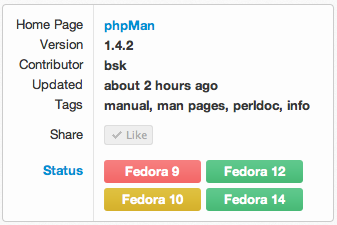Difference between revisions of "App release process"
From Amahi Wiki
| Line 4: | Line 4: | ||
* Alpha (red): when an application is created, it's in Alpha. Only the user who packaged this app can see it and install it. | * Alpha (red): when an application is created, it's in Alpha. Only the user who packaged this app can see it and install it. | ||
| − | * Beta (Orange): when an app reaches Beta it has to be installable (and uninstallable) at a minimum and it can only be seen by the group of users in the [[Tester program]] | + | * Beta (Orange): when an app reaches Beta it has to be installable (and uninstallable) at a minimum and it can only be seen by the group of users in the [[Tester program]] or users that have signed up for the Pro and Ninja plans. Find out more on the [http://www.amahi.org/plans Plans Page] |
* Live (Green): when an app is well tested and suited for every new user, it goes live and it should work for everyone | * Live (Green): when an app is well tested and suited for every new user, it goes live and it should work for everyone | ||
Revision as of 23:26, 15 April 2011
Applications for Amahi have a release process as they progress to full release. Each app has a support status in one or more Amahi platforms (Fedora 9, Fedora 10, 12, and 14, and eventually Ubuntu/Debian, etc.)
The application page lists the status of the application for each platform. Here are the states:
- Alpha (red): when an application is created, it's in Alpha. Only the user who packaged this app can see it and install it.
- Beta (Orange): when an app reaches Beta it has to be installable (and uninstallable) at a minimum and it can only be seen by the group of users in the Tester program or users that have signed up for the Pro and Ninja plans. Find out more on the Plans Page
- Live (Green): when an app is well tested and suited for every new user, it goes live and it should work for everyone
Here is a sample of an app in Alpha on Fedora 9, in Beta for Fedora 10 and Live in Fedora 12 and 14:

